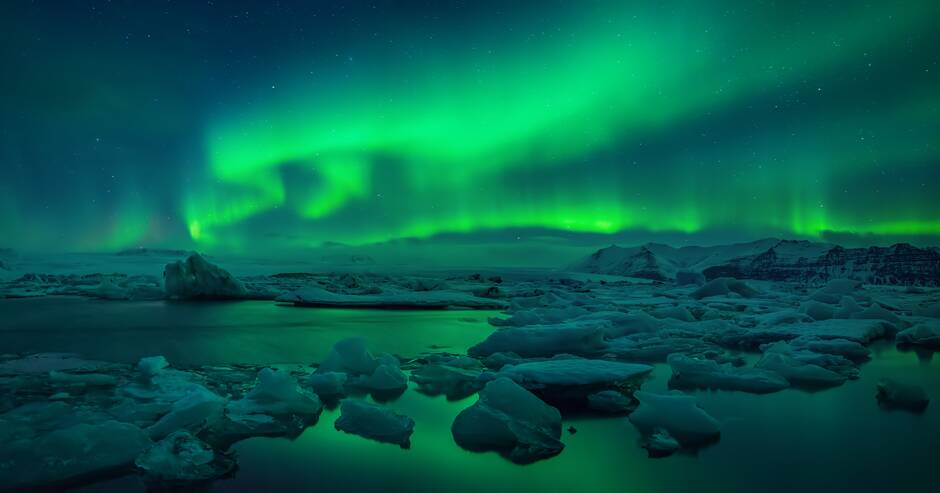Land of fire and ice: Understanding Iceland's geological wonder

Brought to you by Emmanuel Davis
Welcome to Iceland, a land of breathtaking natural beauty and awe-inspiring geological wonders. Nestled on the edge of the Arctic Circle, this enchanting island nation has earned the moniker 'Land of Fire and Ice' due to its unique geological characteristics.
From majestic glaciers and cascading waterfalls to bubbling geothermal springs and active volcanoes, Iceland's landscapes offer a glimpse into the Earth's dynamic forces at work. In this article, we embark on a journey to understand Iceland's geological marvels, exploring the forces that have shaped its extraordinary terrain and highlighting some of the things to do in Iceland.
Volcanic Activity: The Fiery Heart of Iceland
Iceland's geology is a testament to its fiery heart, forged by millions of years of volcanic activity. The island sits atop the Mid-Atlantic Ridge, a divergent tectonic boundary where the North American and Eurasian tectonic plates meet. This geological hotspot is responsible for the island's volcanic formations, making Iceland one of the most volcanically active places on Earth.
The legacy of volcanic activity is evident across Iceland's landscape, with rugged lava fields, volcanic craters, and towering volcanic mountains. The iconic Eyjafjallajkull volcano, known for its 2010 eruption that disrupted air travel across Europe, is just one example of Iceland's fiery geological history. According to the Icelandic Meteorological Office, Iceland has experienced over 200 eruptions in the past 1,000 years, with an average of one eruption every five years.
Glaciers: The Majestic Ice Sculptures
Despite its volcanic nature, Iceland is also home to vast ice fields and glaciers, earning it the second half of its moniker, the "Land of Ice." These magnificent ice formations are a result of the island's northern location and the presence of subpolar ocean currents.
Vatnajkull, the largest glacier in Iceland and Europe, covers an area of around 8,100 square kilometres (3,130 square miles). Its presence shapes the southeastern part of the country and houses stunning ice caves, ice tunnels, and awe-inspiring ice lagoons. Jkulsrln Glacier Lagoon, fed by Vatnajkull's melting ice, is a natural wonder where icebergs drift peacefully before entering the Atlantic Ocean.
A study by the University of Iceland revealed that Iceland's glaciers have been retreating at an average rate of 100-200 metres (328-656 feet) per year in recent decades, largely due to global warming.
Geothermal Phenomena: Harnessing Earth's Natural Energy
Iceland's geothermal energy is a testament to the country's fiery heart. The island is rich in geothermal activity, with countless hot springs, geysers, and geothermal power plants harnessing this valuable natural resource.
One of the most famous geothermal areas in Iceland is the Geysir Geothermal Area, home to the Great Geysir and Strokkur, a geyser that erupts every few minutes, sending boiling water high into the sky. The geothermal activity in this region is a captivating display of the Earth's inner energy.
A report by the International Geothermal Association states that Iceland is a global leader in utilising geothermal energy, with nearly 90 per cent of its homes being heated by geothermal power.
Waterfalls: Nature's Powerful Cascades
Iceland's volcanic and glacial landscapes give rise to numerous stunning waterfalls, each with its unique charm and allure. These majestic cascades are some of the most captivating attractions in the country, drawing visitors with their raw power and natural beauty.
One of Iceland's most iconic waterfalls is Gullfoss, also known as the "Golden Waterfall." Located in the canyon of the Hvt River, Gullfoss is a two-tiered waterfall that plummets into a rugged crevice, creating an awe-inspiring sight. Another popular waterfall is Skgafoss, known for its picturesque setting and the legend of hidden treasure behind its cascading curtain.
According to the Icelandic Tourist Board, over two million tourists visit Gullfoss each year, making it one of the most visited waterfalls in Iceland.
Tectonic Rifts: Silfra Fissure and ingvellir National Park
Iceland's geological wonders extend beyond volcanoes and glaciers to include tectonic rifts that showcase the Earth's dynamic forces. ingvellir National Park is a UNESCO World Heritage site where the North American and Eurasian tectonic plates are drifting apart.
The Silfra Fissure, located in the park, is a stunning rift where visitors can snorkel or dive between the continental plates, witnessing the crystal-clear waters and mesmerising underwater visibility.
The Silfra Fissure is considered one of the top dive sites in the world due to its pristine waters and incredible visibility, offering an unforgettable experience for adventurous travellers. A study by the Icelandic Institute of Natural History showed that the Silfra Fissure has an underwater visibility of over 100 metres (328 feet), making it one of the clearest freshwater dive sites on Earth.
Fumaroles and Hot Springs: The Earth's Steamy Embrace
As Iceland sits on the Mid-Atlantic Ridge, it is rife with fumaroles and hot springs that showcase the Earth's inner workings. These steamy wonders create an otherworldly atmosphere, with bubbling mud pots and hot springs dotting the landscape.
One of the most popular hot spring areas in Iceland is the Blue Lagoon, a geothermal spa known for its milky blue waters rich in minerals. It is believed to have therapeutic properties, attracting visitors seeking relaxation and rejuvenation. The Blue Lagoon welcomes over one million visitors each year, making it one of the most visited attractions in Iceland.
Conclusion: Unveiling the Secrets of Iceland's Geological Marvels
Iceland's geological wonders provide an enchanting tapestry of fire and ice, where volcanic activity and glacial formations intertwine with geothermal marvels and cascading waterfalls. The country's unique location on the Mid-Atlantic Ridge gives rise to stunning natural attractions that leave travellers in awe of the Earth's dynamic forces.
As you plan your visit to Iceland, don't miss the chance to explore its geological marvels. From witnessing fiery volcanoes to traversing majestic glaciers and relaxing in steamy hot springs, Iceland's geological wonders promise a journey unlike any other. So, pack your bags, set out to explore the land of fire and ice, and discover the magic of Iceland's geological realm amidst its captivating landscapes.


